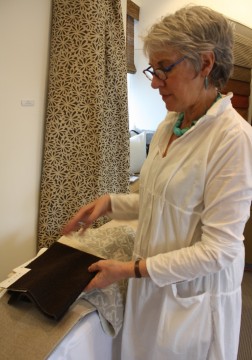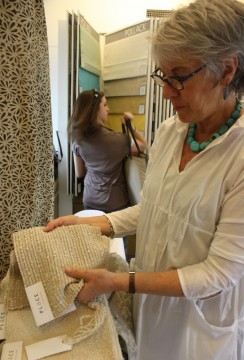Environmentally sound, eco-friendly, green—after a while, they can all sound the same, or like nothing at all. Pollack's Spring Market event at the DDB helped clear the semantic confusion with their discussion, Demystifying Environmentally Responsible Fabric Decisions.
Kristie Strasen, Founder and Creative Director of Place Textiles, led the talk and gave her common sense approach to sorting through the best choices for specifying environmentally responsible fabrics from the rest.

In a time when everyone is aiming to do the right thing, Kristie explained that there is more than one way to address such a complicated issue of being an environmentally savvy shopper. With over 30 years experience, Kristie has been developing a comprehensive range of high-end fabrics, which the audience got to see first hand during the talk.
"So what does 'green' or 'environmentally responsible' fabric even mean?" Kristie asked the audience. "The truth of the matter is, 'green' in the context of environmentally-responsible fabric means different things to different people. Some people are looking for fabrics made from recycled fiber, while others are interested in fabric produced from rapidly renewable resources. Many people think organic fabric is the best route to take while many others seek a fabric that is truly sustainable. So, what does it all mean?"

Kristie explained the differences between the many terms people use when they are aiming to be 'green,' and helped to demystify the concerns behind responsible fabrics. Ultimately, the best advice Kristie wanted to share was making the effort to know where your fabrics and fibers came from.
"When people take these different terms into consideration, they are attempting to make intelligent decisions and this helps the big picture," Kristie said. "Unfortunately, there is no one right answer, but there are ways to avoid being unknowledgeable about how you shop for your interiors. There are many ridiculous ways to claim that something is eco-friendly or green, but if you know where stuff comes from—such as cotton, wool, banana leaf—you're making the first and best step towards deciding on a fabric that is more natural and organic, less harmful to the environment as well as renewable."

Great presentation by a leader in the industry!
ReplyDelete